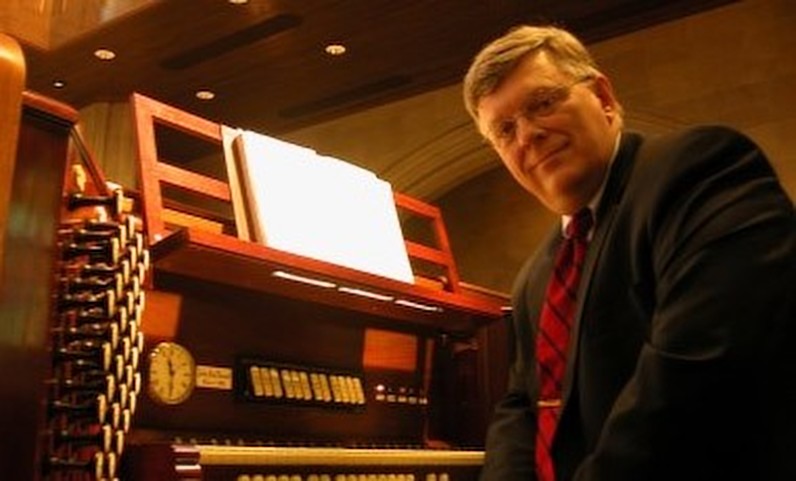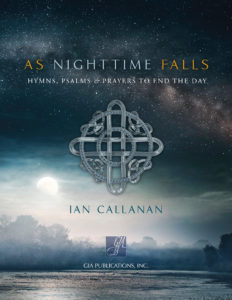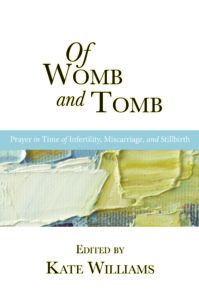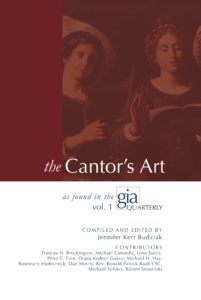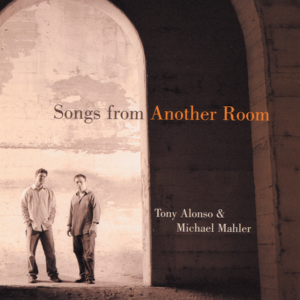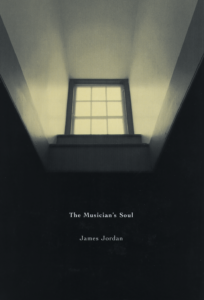The Organ’s Tonal Design and its Building Blocks
The following article was written by John-Paul Buzard, President of Buzard Pipe Organ Builders. John-Paul is a colleague I have known since our student days at Northwestern University, and he is always willing to jump in and be helpful to a friend. Here John-Paul explains the basic sound classes of the pipe organ:
The pipe organ is a unique musical instrument. It does not have a single tone color, but a wide variety of different tones which can be combined to produce the richest palate of sound known to humankind. Even though Full Organ is harmonically complicated and sophisticated, its fundamental building blocks are fairly simple.
There are two species of pipe construction: Flues and Reeds. Flues are like whistles; a vibrating column of air produces the sound and the geometry of the pipe colors it; Reeds produce their tone by a vibrating brass tongue which is amplified and colored by the resonating tube connected to it. Flue pipes make three groups or families of tone: Principals, Flutes and Strings. Reeds, being their own beast, produce a variety of imitative sounds.
Once you become familiar with the four families and their pitch levels, you can combine them to create new sounds. By using one’s ears and imagination the organ can be registered to text-paint hymns and anthem accompaniments. All it takes is spending some good play-time in the musical sand box minding the basic premise that there’s no right or wrong.
Principals
The Principals (or Diapasons) produce sounds specific to the organ; they do not imitate anything. These cylindrical pipes are made of metal. Stops in this family may be called Principals, Diapasons, Octaves, Super Octaves, Twelfths, Fifteenths, Seventeenths and Mixtures. Principals form the backbone of the organ’s tonal design, and they are found at a wide variety of pitches in both the manuals and pedal, to build up complete harmonic choruses.
Flutes
Flutes can be orchestral or organ-like with a wide range of tone colors. Flutes can be played together or with any other stop in the organ to fatten the tone, color an ensemble or a solo stop. The range of Flute Tones is limited only by the imagination of the organ builder. The geometry of the pipe body and the mouth treatment creates a flute’s tone color.
Flutes may be made of wood or metal, open or covered by a tuning stopper (or canister) inserted into or over their open ends. Stoppered pipes have prominent fifth-sounding harmonics, rather than the full range of an open pipe. These may be called Bourdons or Gedeckts. Open pipes may be called Melodias, Claribel Flutes, Open Flutes, Nachthorns. Some stoppered flutes have a “chimney” bored through their stoppers, or soldered onto their metal canisters. These are called Rohrflutes, Chimney Flutes, Flûtes á Bibèron, Flûtes d’Amour. Some flutes are tapered and are called Spire Flutes, Spitzflutes, Blockflutes, Recorders. These hybrid constructions replace a wee bit of the octave harmonics missing from a completely stoppered pipe.
Some open pipes are double their normal length, and have a hole drilled in the center of the pipe to stabilize the pitch. These are called harmonic pipes and their intense tone is imitative of a modern orchestral flute. Harmonic Flutes can be found at all pitches. These may be called Harmonic Flutes, Orchestral Flutes, Flûtes Octaviante, Octavins.
Strings
Organ strings are the warmest, keenest sounds in the organ, but sound least like their orchestral counterparts. They are called “strings” because they produce a harmonic series similar to a bowed string instrument. They may be soft or loud, and appear at many pitches. Typically a string-toned stop in the Swell division of an organ will have a partner rank, tuned slightly sharp, called a Celeste. The resulting undulation is warm and shimmering. Strings may be called Salicionals, Viola da Gambas, Gambes, Violes, Gemshorns, and Voix Celestes.
Reeds
Reeds produce the greatest variety of tones within a single family. They imitate medieval or modern orchestral instruments. Wind pressure, geometry of the resonating tube and the treatment of the reed itself determines the tone color and volume which the pipe will produce. Conical resonators produce a blaze of the entire harmonic series. These are called Trompettes, Trumpets, Cornopeans, Clarions, Trombones, Tubas. Cylindrical resonators produce a fifth-sounding harmonic series and may be called Krummhorns, Cromornes, Clarinets, Basset Horns. Hybrid-shaped resonators produce orchestral tone colors as English Horns, French Horns, Oboes and Bassoons in addition to the antique sounds of Bombardes and Zinks. Short-length resonators, often with creative resonator shapes, produce unusual tone colors like the Vox Humana, Rankett, Regal, Baarpfeife.
Mixtures
Mixtures are stops in which multiple ranks of pipes sound on a single note. These are nearly always made of Principal pipes. Mixtures are typically composed of unison and fifth-sounding ranks, repeating themselves at points in the musical scale which the tonal designer determines, given the desired result. If appropriately composed, scaled and voiced, a low-pitched mixture can be used to create a complicated full sound, but without adding brilliance to the ensemble; a medium-pitched mixture can add brightness to a chorus in the bass and reinforce the unison in the treble; a high-pitched mixture can add brilliance to a chorus or an individual unison stop for special effects. Mixtures are easy to spot as their stop controls indicate how many ranks each note plays by a Roman numeral. Common names you might see on your console might be: Mixture, Fourniture, Plein Jeu, Full Mixture. Scharf, Sharp Mixture and Cymbale are high pitched mixtures.
By artfully combining stops one can create a sound for any situation. By varying registrations for each verse of a hymn, the organ can add interest and, if the right stops are combined at the right time, highlight the texts being sung.
If one were to analyze the harmonic structure of Full Organ, the resulting graph would be almost impossible to read. With a majestic, full sound the organ can support hundreds of people in their singing. It can create a “Festal Shout” in one breath, and weep for the passing of a child in another. It significantly energizes the acoustics of the building, and routinely elicits emotional responses.
Have fun and take the time to listen to every stop in your organ, and combinations of others. You’ll find hundreds of possible combinations which you might use for just the right moment in an upcoming service. Enjoy your time in the musical sand box!
John-Paul Buzard is president and artistic director of Buzard Pipe Organ Builders, based in Champaign, Illinois and founded in 1985. He was appointed Curator of Organs for the University of Illinois at Urbana-Champaign following graduate school, and began to lay the groundwork for his company through organ-building and restoration projects in the Champaign area. Mr. Buzard continues as Curator of Organs for the University of Illinois, and also serves as Curator of Organs for MacMurray College, Illinois College, Indiana University, and DePauw University. He earned a Master’s degree in organ and church music from Northwestern University, studying organ with Richard Enright and Wolfgang Rübsam, and also spent two years in the organ performance program at the University of Illinois at Urbana-Champaign, studying organ with Jerald Hamilton. Mr. Buzard is a certified Master Organbuilder with the American Institute of Organbuilders (AIO), a member of the Associated Pipe Organ Builders of America (APOBA), and a member of the Worshipful Company of Musicians of the City of London.

